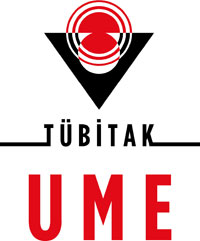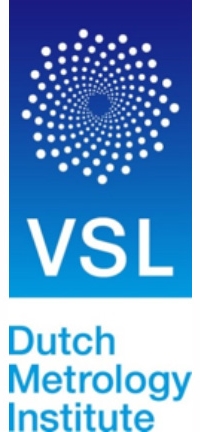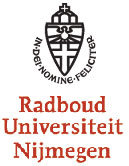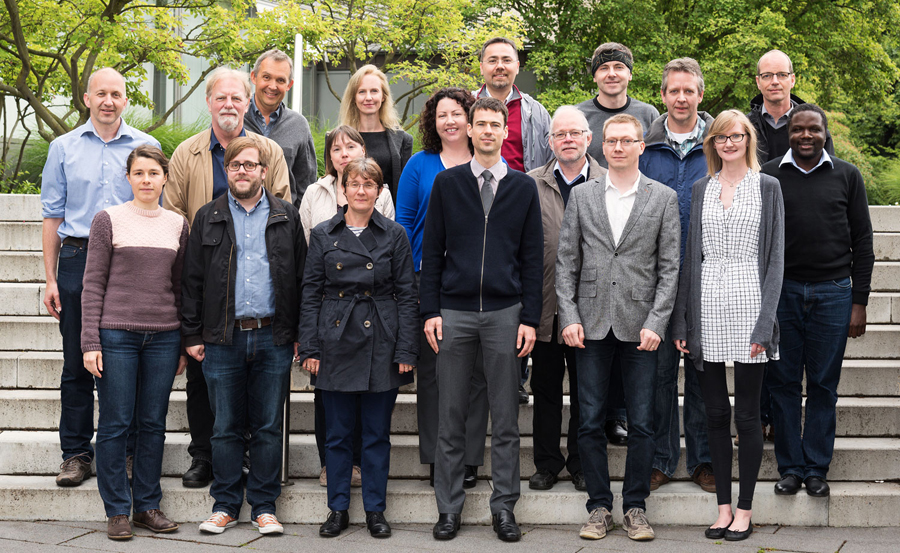 |
NPL:
The National Physical Laboratory (NPL) is the National Measurement Institute for the UK and is a world-leading centre of excellence in developing and applying the most accurate measurement standards to science and technology. NPL underpins the national measurement system, ensuring consistency and traceability of measurements throughout the UK. The Analytical Science Division at NPL is devoted to the development and dissemination of new reference standards to underpin chemical and biological measurements and includes more than 90 scientists. The research outputs from this project will be delivered by the Gas and Particle Metrology Group at NPL. This group consists of 22 scientists and is devoted to the development and dissemination of standards for gas and particle analysis. High accuracy reference standards of greenhouse gases feature particularly high up in the group's strategic agenda. NPL also holds a leading position in the preparation and analysis of synthetic greenhouse gas reference standards (primarily CO2, CH4 and CO) demonstrated by coordination and participation in key comparisons (e.g. CCQM K82 CH4 in air). |
 |
CMI:
CMI is the national metrology institute and the highest authority of the Czech Republic for metrology and also for testing telecommunication devices. CMI comes under the auspices of the Ministry of Economics and Trade. It has about 300 employees.The pressure, vacuum, low gas flow and gas density laboratory of Czech Metrology Institute is relatively young, established in the mid-nineties after the break-up of Czechoslovakia. Currently the lab has ten employees, five of them are working fully or partly in the field of vacuum. The staff aims to gradually establish a complete coverage of vacuum metrology; emphasising modern technologies (digital pressure balance with non-rotating piston, low outgassing materials) and attempt to take part in many inter-laboratory comparisons. There is also intensive cooperation with Charles University of Prague and other European NMIs either within EURAMET or bilaterally. |
 |
DFM:
DFM has during the past 18 years been active in the development of laser spectroscopic methods for monitoring purposes and more recently as a primary reference method. To this end fundamental ro vibrational bands have been monitored by the laser difference frequency technique, which generate radiation in the mid-infrared region, and by a tunable homebuilt single mode, narrow line width (1 MHz) tunable OPO system (3,2 - 3,7 ?m, extension under development), as well as by tunable telecom lasers (1.3 ?m - 1.6 ?m region). These techniques will be applied in the JRP together with various multipath absorption cells. DFM will use the mentioned sources to investigate ro-vibrational absorption lines in fundamental vibrational bands as well as near infrared overtone and combination bands of the molecules of interest. The latter bands are considerably weaker than the fundamental bands of the molecules. However, the attraction is that the monitoring systems can be made very compact and portable using optical fibres and are therefore likely to be the method of choice in future measurements schemes. |
 |
IL:
The Finnish Meteorological Institute (FMI) is a governmental institution under the Ministry of Transport and Communications. The working areas of FMI are meteorology, climatology, geophysics, air quality and climate change. FMI is the appointed expert organisation on air quality issues in Finland and has a key role in coordination of air quality assessments and training in air quality field in local to national scale. FMI has been the centre of national expertise in air pollution matters since the early 1970's when the first background air quality network for systematic and continuous measurements of airborne pollutants was established. Today the network consists of monitoring stations producing the measurements required by the EU Air Quality Directives and by several international air pollution programmes e.g. EMEP, WMO/GAW and ICOS programme for measuring air quality and greenhouse gases in areas that are potentially under the influence of major pollution sources. |
 |
LNE:
LNE is committed to excellence in measurement and testing and to progress in quality and safety, for the benefit of industries and consumers alike. Since 1997, LNE's public service mission has been specified in a fulfilment agreement drawn up every four years with the French government. The state's financial contribution takes the form of annual subsidies. These enable the Laboratory to operate as the national reference laboratory in metrology for French industry, to pursue its scientific and technological development in order to anticipate new measurement and testing requirements created by advances in technology and society's new expectations in the spheres of safety, health, quality and environmental protection, to provide state authorities and key economic players with the technical assistance they require to draft new regulations and standards at national, European and international level, to develop new test methods and to carry out market surveillance. |
 |
METAS:
METAS is the Swiss Federal Institute of Metrology. It realises and disseminates internationally harmonised and recognised measurement standards at the required accuracy. The Analytical Chemistry Section provides services related to the application of measuring instruments in the fields of environment and health. It provides standards and calibration services to measure air pollutants. The gas analysis laboratory provides services in the area of gaseous airborne pollutants and has carried out accurate measurements of gas mixtures for over 25 years. It started with the analysis and homologation of exhaust gas analysers according to Swiss national law. A special emphasis of the laboratory lies on the dynamic generation of gas mixtures. |
 |
MIKES:
The Centre for Metrology and Accreditation (MIKES) is a National Metrology Institute designated to develop and maintain the SI-system in Finland. MIKES carries out scientific research on fundamental and applied metrology to improve the realisation of the SI units and the accuracy of measurements, as well as the development of novel measurement techniques and instrumentation. MIKES is one of the world's five reference laboratories for the metre. The laboratory environment of the new MIKES building is state-of-the-art, with control of ambient conditions and vibration isolation of the optical tables which is among the best in the world. |
 |
PTB:
The Physikalisch-Technische Bundesanstalt (PTB) is Germany's national metrology institute. It is an institution for science and technology and the highest technical authority of the Federal Republic of Germany for the field of metrology and certain sectors of safety engineering. PTB comes under the auspices of the Federal Ministry of Economics and Energy. It meets the requirements for calibration and testing laboratories as defined in the EN ISO/IEC 17025. It has a staff of about 1600 employees of whom about 500 are graduates. It is a fundamental task of PTB to realise and maintain the legal units in compliance with the International System of Units (SI) and to disseminate them. PTB is also responsible for coordinating the national network for Metrology in Chemistry. With respect to gas analysis, this network is the framework for close collaboration with the Federal Agency for Environmental Protection (UBA) and the Bundesanstalt für Materialforschung und -prüfung (BAM). UBA is acting as the national air quality reference laboratory and BAM as Germany's representative for industrial reference gas traceability. |
 |
TUBITAK:
Ulusal Metroloji Enstitusu (UME) is the Turkish National Metrology Institute and is part of the legal entity Turkiye Bilimsel ve Teknolojik Arastirma Kurumu (TUBITAK). UME operates with the mission to establish and maintain national measurements standards in accordance with the SI Units for providing traceability to the secondary laboratories. The institute represents Turkey at an international level in the field of metrology and conducts applied research especially focusing on measuring device producer companies, industrial automation, military and advanced energy technologies. UME was officially established in 1992 and a funded partner of this JRP. |
 |
VSL:
VSL is the Dutch Metrology Institute, and participates with staff and equipment from the chemistry group (gas analysis). Within the group there is more than 30 years' experience in the preparation and certification of gas mixtures, including those for air quality applications. The accuracy of the gravimetrically prepared mixtures is state-of-the-art and has been demonstrated in many international (Key) comparisons with other National Metrology Institutes. The analytical facilities cover a broad range of applications, including trace gas analysis by spectroscopy, necessary for the quantification of low amount of substance fractions of greenhouse gases and critical impurities in balance gases.The chemistry group has a vast track record in the supply of calibration and reference gas mixtures for a wide range of components in a broad range of compositions. The group also has many years of experience in purity analysis of balance gases, including the work in the EMRP MACPoll project. VSL has a wide variety of state-of-the-art analytical equipment for analysis of all air quality gaseous components. Over the last five years the group has invested strongly in novel laser-based spectroscopic techniques capable of analysing a range of components with nmol/mol or sub-nmol/mol sensitivity. |
 |
EMPA:
The Laboratory for Air Pollution / Environmental Technology at EMPA runs the Swiss National Air Pollution Monitoring Network (NABEL). Furthermore, it is responsible for the Swiss monitoring activities resulting from international obligations (EMEP) and has been designated by the World Meteorological Organisation (WMO) to operate the World Calibration Centre for surface ozone, CO, CH4 and CO2 (WCC-EMPA), as well as the Quality Assurance/Scientific Activity Centre Switzerland (QA/SAC). Members of the Laboratory represent Switzerland in the MC of COST TeraMIR, SIBAE and EuNetAir and are WP leader in the FP7 European Research infrastructure projects InGOS and AIRMONTECH. |
 |
REG(RU):
Radboud University is one of the leading academic communities in the Netherlands. The Trace Gas research group is embedded in the Institute of Molecules and Materials (IMM) with its excellent and unique spectroscopic facilities (NMR, High Field Magnet, Free Electron laser Facility, Scanning probe laboratory, Trace gas Facility), its strong interaction between physicists and chemists and between theoretical and experimental groups, and a large degree of collaboration at international level. The IMM maintains a running budget of about 20 M€ and has 50 scientific staff members, around 30 postdocs and 115 PhD students, and 50 supporting staff members. Within IMM, the Trace Gas research group develops state-of-the-art laser spectroscopic methods for the detection of trace gasses, relevant for biological and medical sciences. Currently, Quantum Cascade Lasers and mid-IR Optical Parametric Oscillators are used for this. The latest solid-state laser and optical fiber technology is also exploited to extend the capabilities of existing OPOs and QCLs and matching detection methods to retrieve and computer-analyze trace gas concentration data within seconds. The laser-based analytical instruments operate in the 1.5-10 µm wavelength range with maximum coverage of the molecular fingerprint region and superior wavelength agility (tens of thousands of distinct wavelengths per second). The latter enables rapid and accurate examination of complex gas mixtures, such as human breath. The capabilities of existing detection systems are extended towards robust trace gas sensors. Thereby, the focus is state-of-the-art detection of substances at sub-part per billion (volume) concentrations, on-line, non-invasive, with high selectivity and detection speed. Recently, the group has started several research projects developing mid- and near-infrared Frequency Combs for fast Fourier Transform Spectrometry to be implemented for chemical analysis. |

